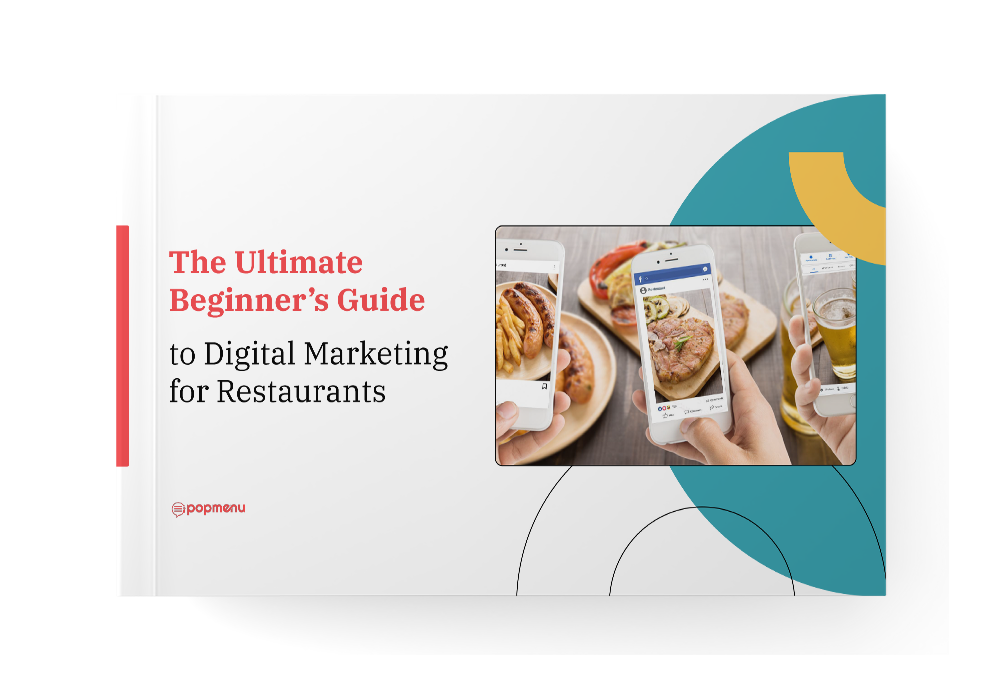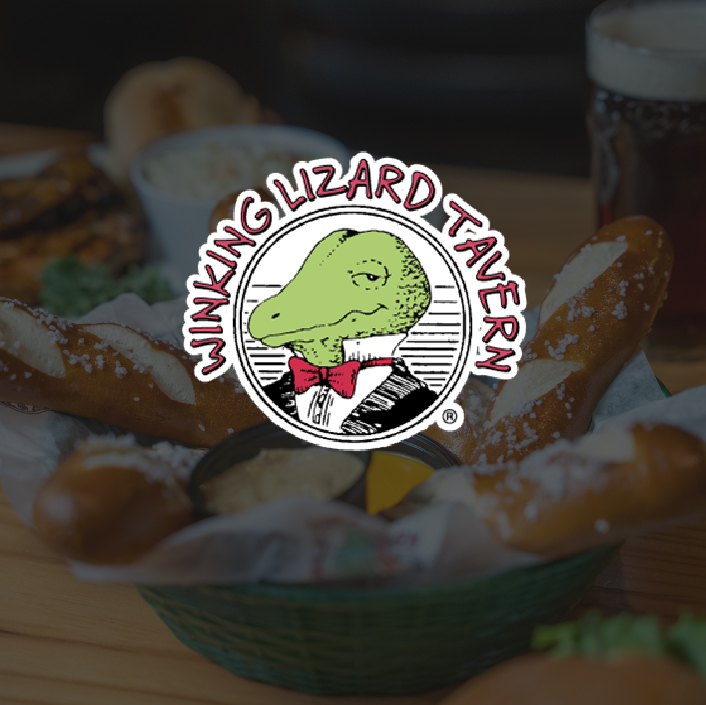
6 common restaurant marketing myths debunked

With one-third of restaurant owners and operators saying they spend less than an hour on marketing each week, it’s clear that many restaurateurs think they don’t have the time to dedicate to marketing their business. This idea that marketing has to be complicated, time-consuming, and expensive is a myth that we’re here to debunk—along with a few other common marketing misconceptions. In this article, we shed some light on the reality of marketing in the restaurant industry and prove that promoting your business doesn’t have to be so daunting.
Myth #1 – Marketing a restaurant is too complicated and time-consuming
Even less-than-tech-savvy restaurant owners and general managers can market their restaurants with the right tools and simple, yet effective strategies. Many operators take advantage of marketing automation tools. These send messages to guests based on their information and behavior on your website—think a happy birthday message or a reminder to leave a review—without requiring attention from you or your team.
Social management platforms are another great way to streamline marketing efforts. Restaurants can provide access to their social media accounts to make it easy to plan and schedule content ahead of time. Set it and forget it!
For those less artisticly inclined, design tools like Canva make it easy to create engaging visual content for your website social media, emails, and more. Take advantage of their templates, and be sure to use plenty of dish photos from your restaurant!
Additionally, artificial intelligence can be an excellent way for restaurants to streamline their content creation. Tools like ChatGPT are great for brainstorming content ideas and drafting copy. For a solution that’s built specifically for restaurants, we recommend Popmenu AI Marketing (shocker!). It uses content from your restaurant’s website, like top selling dishes or upcoming events, to create email, social media, and text message drafts for an entire month. It’s a great way to save time on creating marketing content from scratch.
Myth #2 – Driving results is too expensive
In today's digital landscape, effective marketing doesn't always require hefty advertising budgets on platforms like Google or Facebook. With the right strategies and tools, restaurants can harness the power of free marketing channels to drive meaningful results.
Organic communications offer a cost-effective avenue for sharing authentic, engaging content directly from the heart of your restaurant. By consistently connecting with your audience, you can showcase your brand's personality and cultivate greater awareness without breaking the bank. Take a cue from industry leaders like The Chori Man, whose Instagram presence exemplifies the impact of organic content in building a strong brand identity.

While sponsored or paid social content can extend your reach and enhance engagement, the return on investment isn't always guaranteed. Similarly, investing in paid advertising on Google may not always yield the desired results and can require a lot of technical expertise to even begin to measure performance. Shameless plug, this is why we built performance and insight dashboards into our platform. These provide clear insights into how marketing efforts translate into tangible revenue for your restaurant.
By leveraging tools like Popmenu, restaurants can track the effectiveness of their marketing campaigns in real-time, allowing for informed decision-making and resource allocation. Whether it's updating your website with blog articles, events, or press features, these organic efforts can significantly bolster your online presence and drive customer engagement.
Take Winking Lizard, a Popmenu client, as a prime example of how intentional website design and content management can elevate a restaurant's digital presence. By prioritizing user experience and search engine optimization, they've positioned themselves above competitors and attracted a steady stream of loyal customers.
Ultimately, meaningful and consistent organic content remains a cornerstone of successful marketing strategies, fostering lasting connections with both existing patrons and prospective diners. And while paid content certainly has its place, it's reassuring to know that effective marketing doesn't always require a substantial financial investment.
Myth #3 – Email marketing does not work
Email marketing is an incredibly effective way to connect with customers—especially in restaurants. Email remains a top marketing channel for delivering the highest ROI, with an average of $42 earned for every dollar spent. Not to mention, the average open rate for restaurant emails is 20%.
Email is an incredibly viable way to remind guests about business operations, new menus, events, and specials; and with the right marketing tools, you can easily create customized branded emails that drive orders and build awareness around your restaurant.
Palo Mesa leveraged strategic email marketing campaigns to drive online sales. By partnering with a marketing expert, they were able to generate over $42,000 in online ordering revenue from monthly email communications, with a single email earning them as much as $2,900 in sales. These results are a great example of just how powerful email marketing can be for restaurants.
Myth #4: Offers are tacky and not useful
Deals and offers can have a significant impact on where diners decide to eat. Offers are an effective way to remind guests about your restaurant and incentivize them to make another visit—and with 65% of consumers wanting to receive special promotions from restaurants at least once a week, you can be certain that guests will be happy to hear from you.
If you’re worried about your margins, utilize offers lightly and with a purpose, and look for ways that you can earn value as well: like a 10% introductory offer that incentivizes customers to sign up for your email list. The key to successful offers is tying them to your needs; when done well, offers can help to deepen guest relationships and drive transactions and revenue.

Emporium Thai used offers in their email communications to drive catering orders from their customers. By offering customers a delectable $30 discount on their next catering order, the restaurant earned an impressive $2,272 in online sales—and it only cost them $150 in discounts! Their story is a great example of the returns restaurants can see by using offers and discounts effectively.
Myth #5 – PDFs are sufficient for online menus
Today a restaurant's online menu serves as more than just a list of dishes—it's a crucial marketing tool that can significantly impact guest perceptions and decisions. With a staggering 93 percent of customers checking a restaurant's online menu before dining in or placing an order, it's paramount to ensure that menus are not only visually appealing but also user-friendly across all devices.
While uploading a PDF may seem like the simplest solution, it often results in a poor user experience, especially on mobile devices. In fact, studies show that 30% of guests would automatically navigate away from a restaurant's website if they encounter a PDF menu on their phone. Additionally, PDF menus are not readable by search engines like Google, which means missed opportunities for crucial rankings on results pages.
By leveraging interactive menus (humble brag, this is our invention!) with unique URLs for each dish, restaurants can enhance their online visibility and connect with potential diners searching for specific items like "chicken sandwich near me" or "best pizza in Cleveland." Furthermore, interactive menus provide diners with essential information, including enticing dish photos and insightful reviews, empowering them to make informed dining decisions.
But the benefits don't stop there. Every interaction with an interactive menu presents an opportunity to collect valuable guest contact information. This data can then be leveraged to build loyalty through targeted marketing emails, personalized offers, text messages, and more. By transforming traditional menus into dynamic marketing assets, interactive menus prove to be one of the strongest assets in a restaurant’s marketing toolkit.
Myth #6 – Marketing isn’t necessary to be successful
With over 3.96 billion users on social media and 5.6 billion searches on Google per day, there are countless opportunities to connect with new and current customers. Any opportunity missed is a chance for a competitor to grab a diner’s attention, so taking advantage of every avenue is crucial to growing your restaurant.
Using simple, yet effective marketing strategies will guarantee your restaurant remains top-of-mind, even amongst the competition. Marketing tactics like email, loyalty programs, offers, and more can help you communicate with long-time guests, drive more revenue, and increase foot traffic on slower days. Even a little bit of marketing can go a long way.
Looking to get started with your “little bit of marketing”? Popmenu can help! Schedule a 20 minute conversation with one of our experts to learn how our platform can make marketing easier for your restaurant!





.jpeg)






